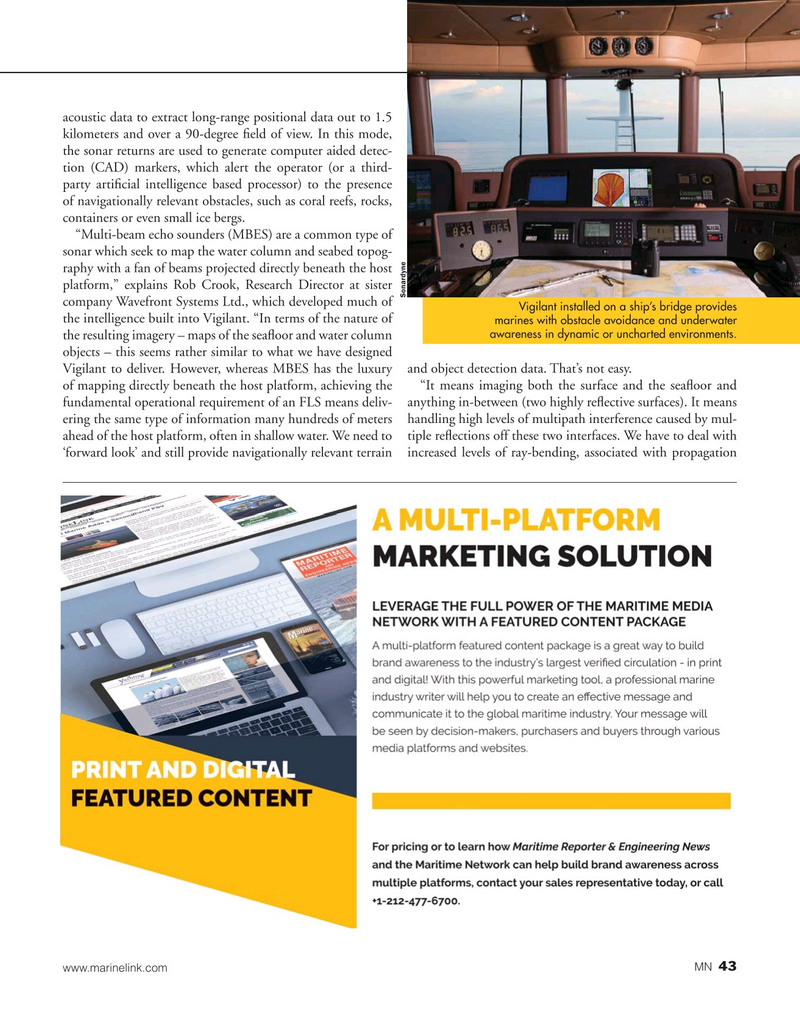
Page 43: of Marine News Magazine (June 2020)
Combat & Patrol Craft Annual
Read this page in Pdf, Flash or Html5 edition of June 2020 Marine News Magazine
acoustic data to extract long-range positional data out to 1.5 kilometers and over a 90-degree ?eld of view. In this mode, the sonar returns are used to generate computer aided detec- tion (CAD) markers, which alert the operator (or a third- party arti?cial intelligence based processor) to the presence of navigationally relevant obstacles, such as coral reefs, rocks, containers or even small ice bergs. “Multi-beam echo sounders (MBES) are a common type of sonar which seek to map the water column and seabed topog- raphy with a fan of beams projected directly beneath the host platform,” explains Rob Crook, Research Director at sister
Sonardyne company Wavefront Systems Ltd., which developed much of
Vigilant installed on a ship’s bridge provides the intelligence built into Vigilant. “In terms of the nature of marines with obstacle avoidance and underwater awareness in dynamic or uncharted environments.
the resulting imagery – maps of the sea?oor and water column objects – this seems rather similar to what we have designed
Vigilant to deliver. However, whereas MBES has the luxury and object detection data. That’s not easy. of mapping directly beneath the host platform, achieving the “It means imaging both the surface and the sea?oor and fundamental operational requirement of an FLS means deliv- anything in-between (two highly re?ective surfaces). It means ering the same type of information many hundreds of meters handling high levels of multipath interference caused by mul- ahead of the host platform, often in shallow water. We need to tiple re?ections off these two interfaces. We have to deal with ‘forward look’ and still provide navigationally relevant terrain increased levels of ray-bending, associated with propagation 43 www.marinelink.com MN

 42
42

 44
44
